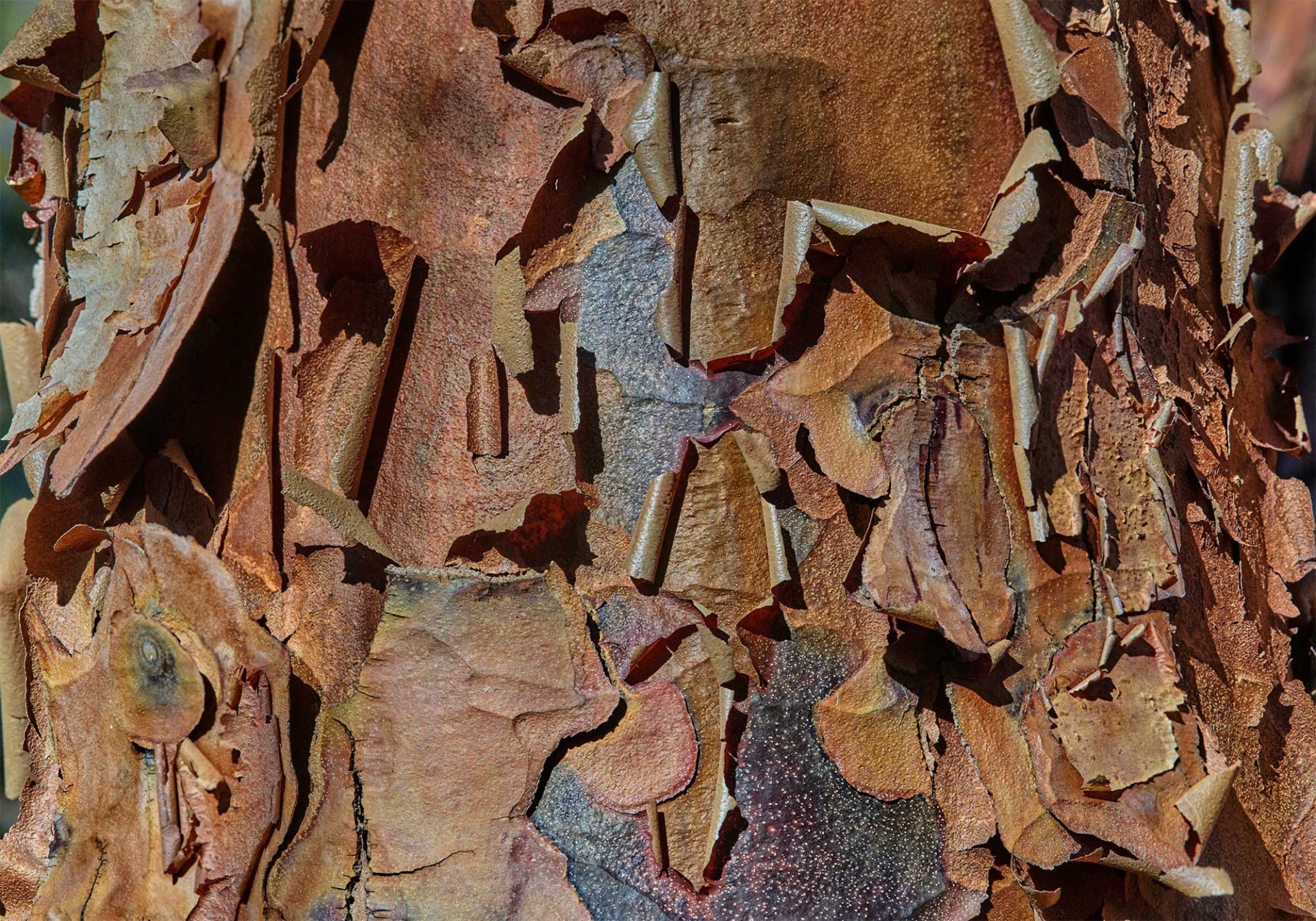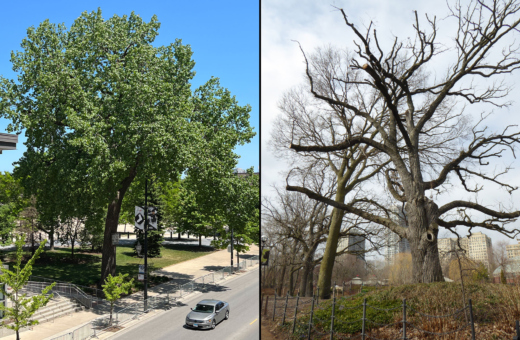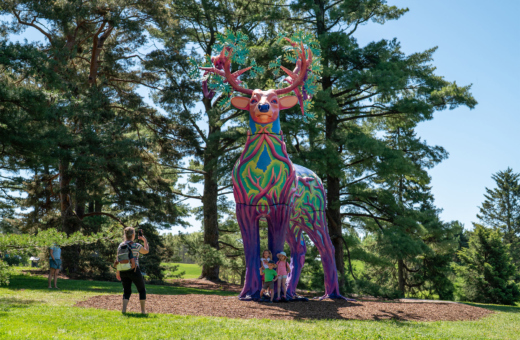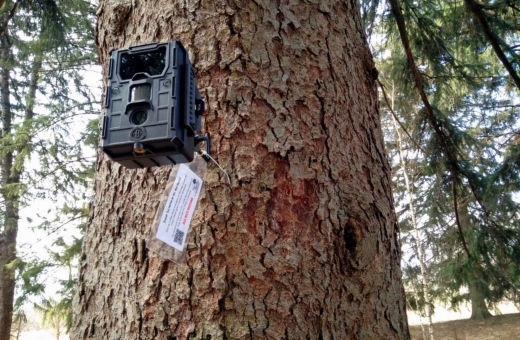Look Closely at Bark for Subtle Beauty
As you travel the Arboretum’s paths and trails in spring and summer, you may admire the flowers and leaves of the trees around you. But even in winter, when leaves and flowers are a memory, trees are beautiful—especially their distinctive and varied bark.
Each species has a characteristic color and texture to its bark. There are trees with smooth bark, deeply ridged bark, multicolored bark, and bark that peels in winsome curls, such as that of paper-barked maple (above).
Bark is an essential part of a tree. It’s not just a shield and insulator against weather, diseases, pests, fire, and other threats. It’s also a living organ: Just beneath the bark you can see is a hidden layer of cells that transport vital water and nutrients from the roots to the leaves, and carry the sugars made in the leaves down to the roots to store the tree’s reserves of food.
While you enjoy the brisk air and natural surroundings of The Morton Arboretum on fall and winter outings, pause to notice the bark of the trees. Here are some distinctive kinds of bark you may spot in the tree collections and natural areas.
American Hornbeam
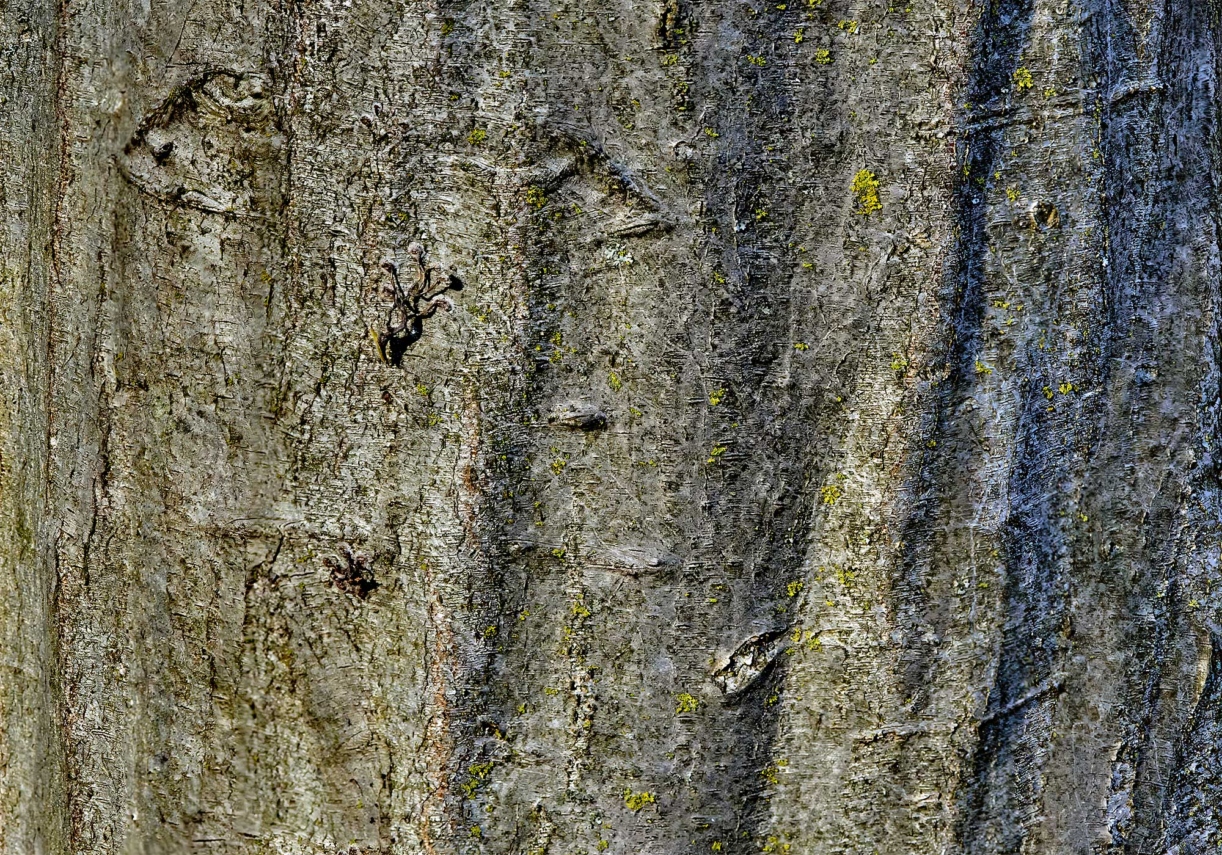
This smooth, sinewy, rippling gray bark belongs to a tree that is sometimes also called musclewood (Carpinus caroliniana). It’s a small, often multistemmed tree that is native to the Chicago region. Many American hornbeams grow at the Arboretum, but two places to look are the Midwest Collection (parking lot P-2) and the Eastern North America Collection (parking lot P-16).
Bur Oak
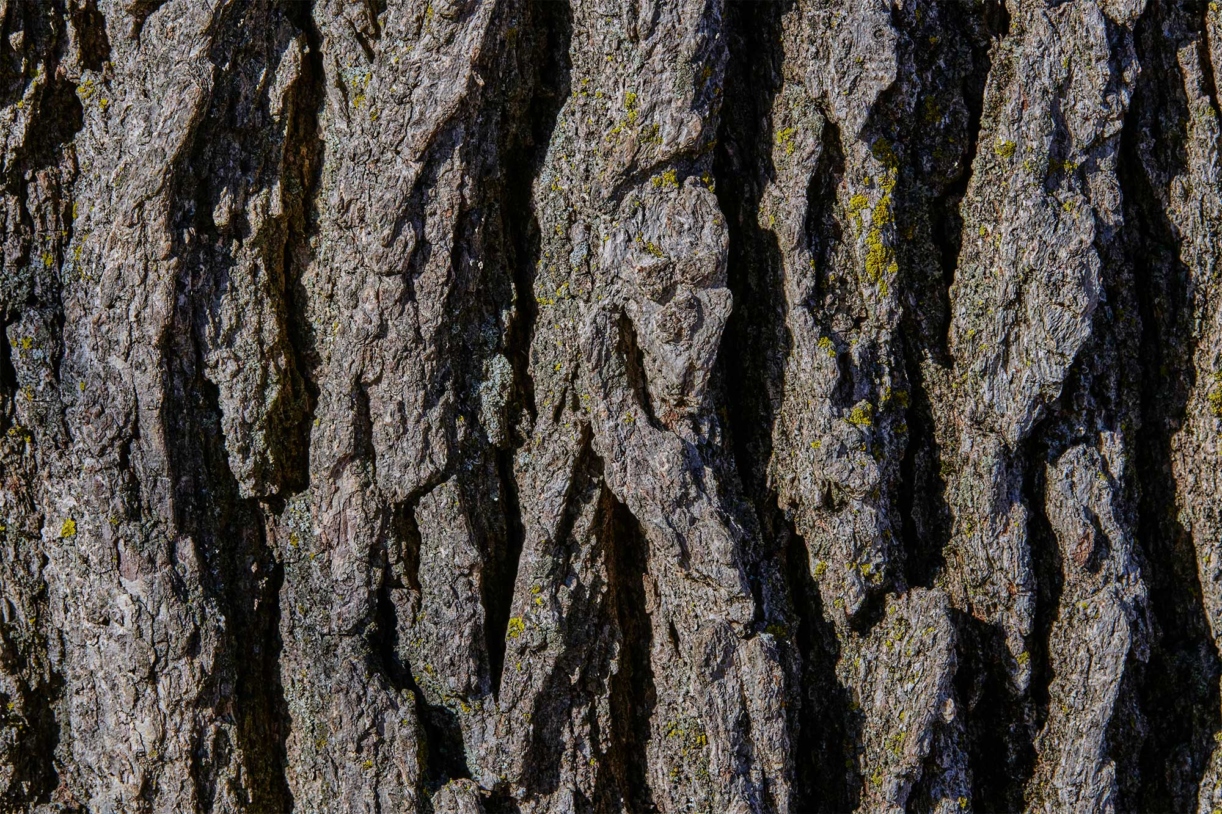
The thick, corky, furrowed bark of the bur oak (Quercus macrocarpa) insulates it against fire—a useful adaptation for these trees and the wildlife they support. Before the Chicago area was settled, fires were common in its woodlands and prairies, helping to suppress competing species such as maples so fire-tolerant oaks could thrive. Large bur oaks, some of which were growing here before the Arboretum was founded more than a century ago, grow in many places, but are easy to find in the Oak Collection (parking lot P-8).
Dawn Redwood
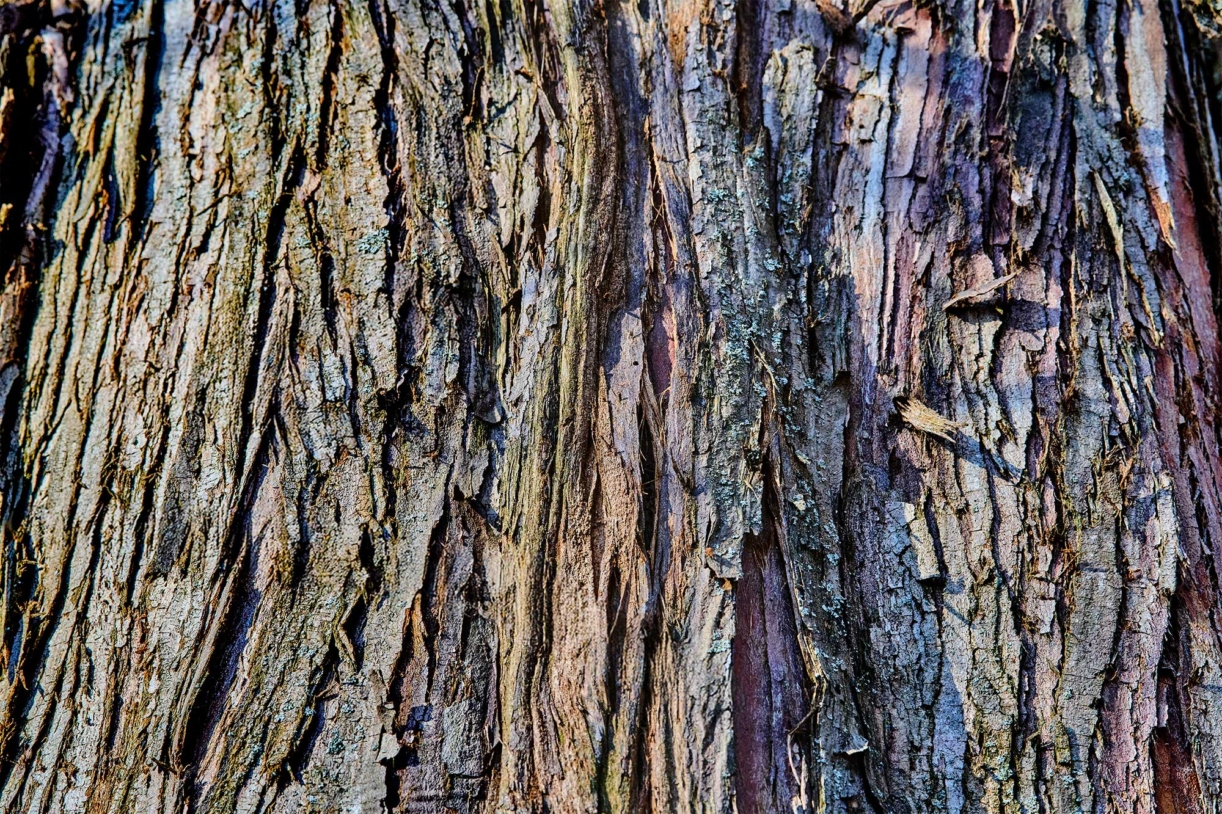
Older bark of the dawn redwood (Metasequoia glyptostroboides) often peels away in long strips as the tree matures, revealing newer reddish bark beneath. This tall tree, which can be seen in the Temperate Asia Collection (parking lot P-17), was known only from fossils until Chinese scientists discovered living specimens in 1948. It has another distinction: Unlike most other conifers, such as spruce and fir, it is not evergreen but loses its needles each fall and grows a new set in spring.
Hackberry
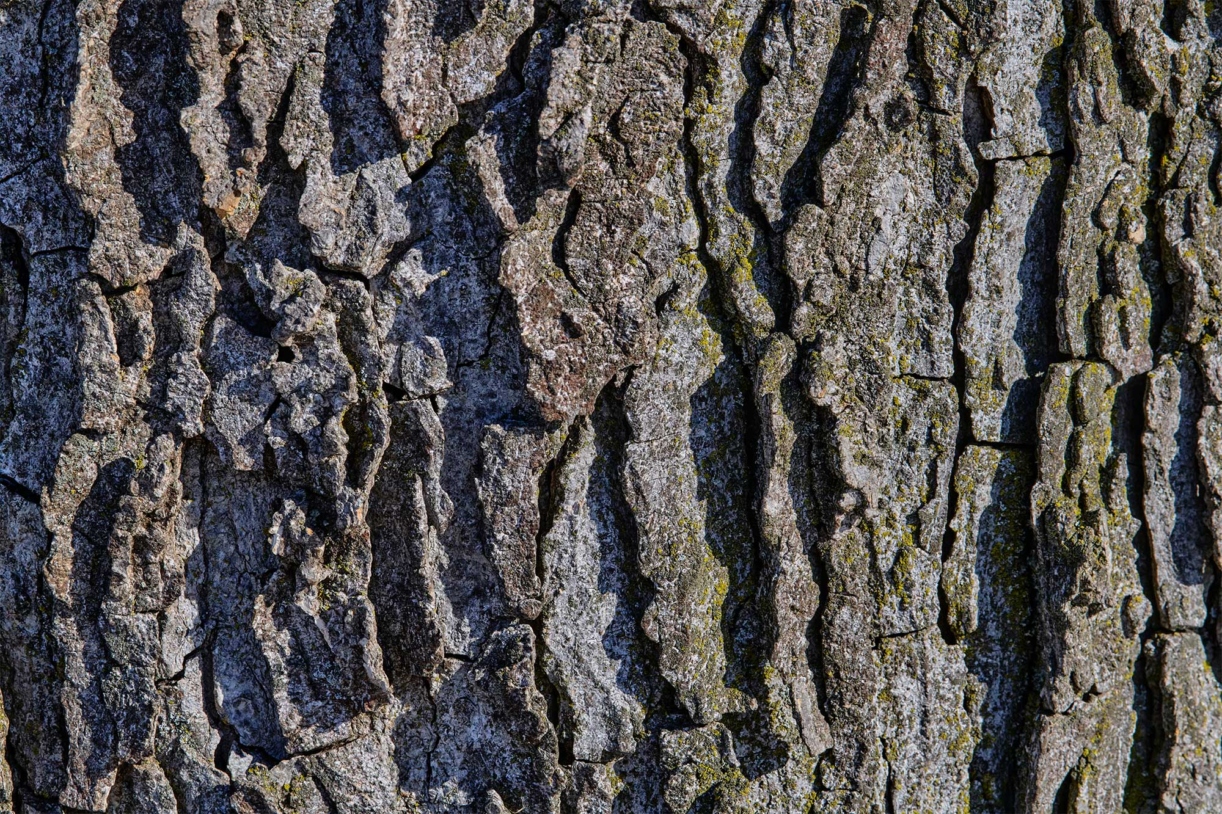
Smooth when the tree is young, the bark of this Chicago-area native develops bumps or ridges as it ages. It’s often planted along city and suburban streets because the species is tough and tolerant of difficult conditions. It supports birds with berries that often persist into winter and is the host plant for several species of butterflies. Look for hackberries (Celtis occidentalis) in the Midwest Collection (parking lot P-2).
Lacebark Pine
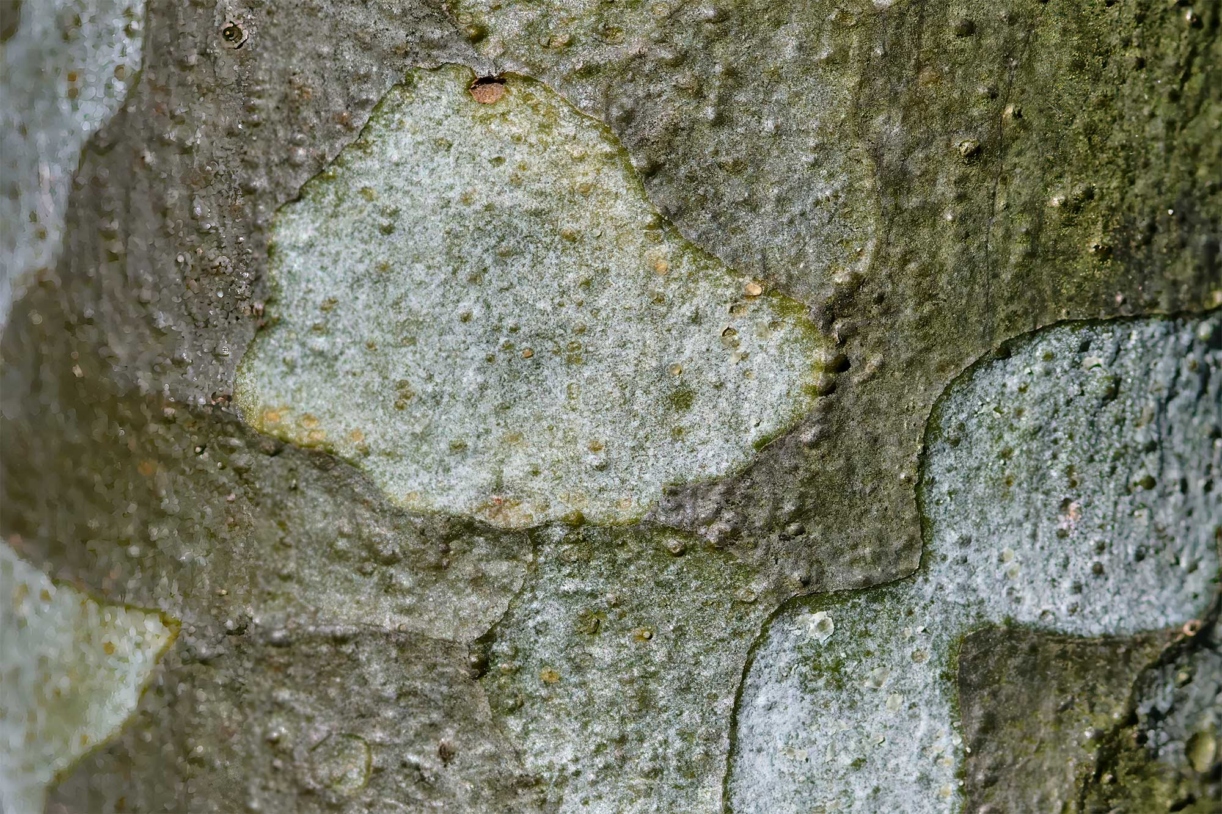
The motley bark of lacebark pine (Pinus bungeana) is eye-catching in the Conifer Collection (parking lot P-1). As this Chinese evergreen tree grows older, the oldest, gray-green layer of bark sloughs off in patches, revealing yellowish patches of younger bark layers that turn pale gray, reddish, or sometimes nearly purple once they are exposed to light.
London Planetree
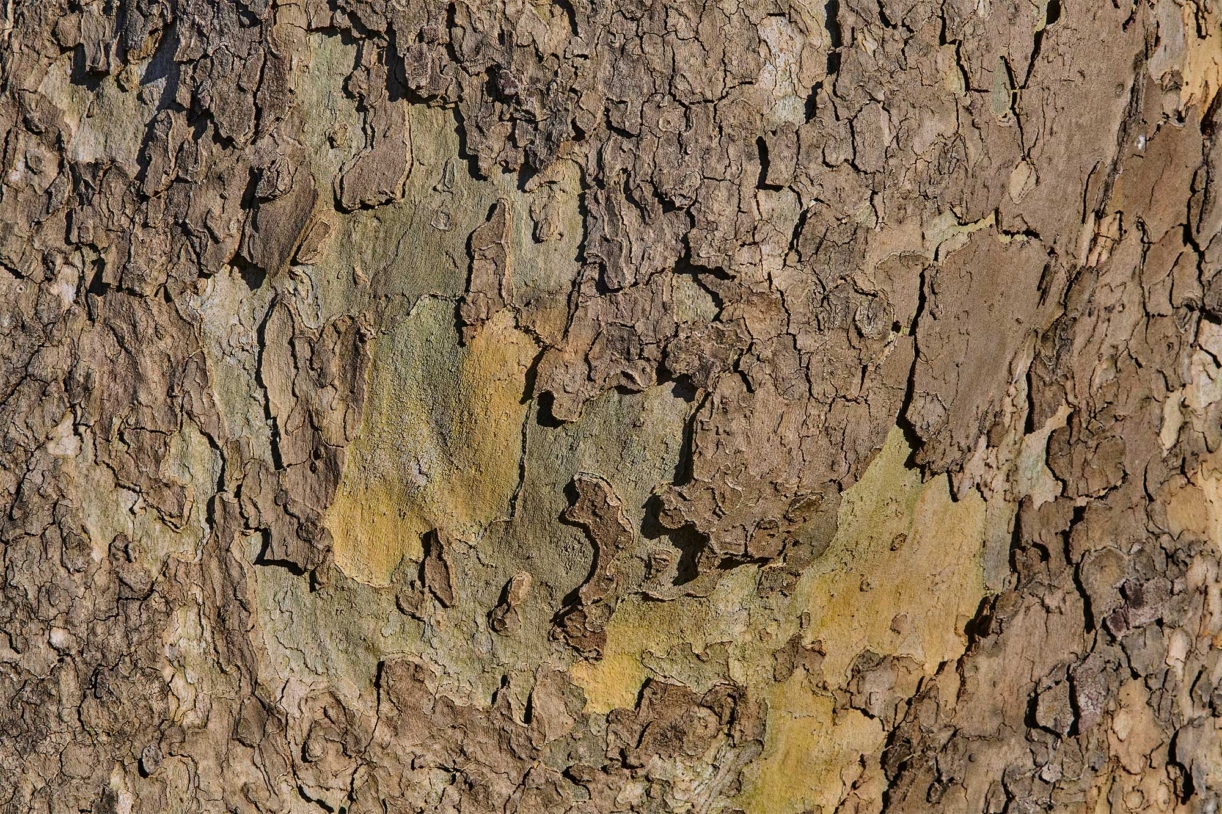
Its distinctive bark is one reason the tough and pollution-tolerant London planetree (Platanus x acerifolia) has been a popular shade tree in cities since the 18th century. When mature, the tree sheds large scraps of its flaky gray-brown bark, revealing white, gray, and green patches beneath. The top of old trees is often nearly white. As the tree sheds its oldest bark, it also sheds the smoke and soot particles clinging to it. The London planetree is a hybrid between the American sycamore (Platanus occidentalis) and the Asian planetree (Platanus orientalis). The Morton Arboretum has released a cultivated variety with a narrower form, the Exclamation!® London planetree. Look for it near the Administration and Research Center (parking lot P-1).
Paper-Barked Maple
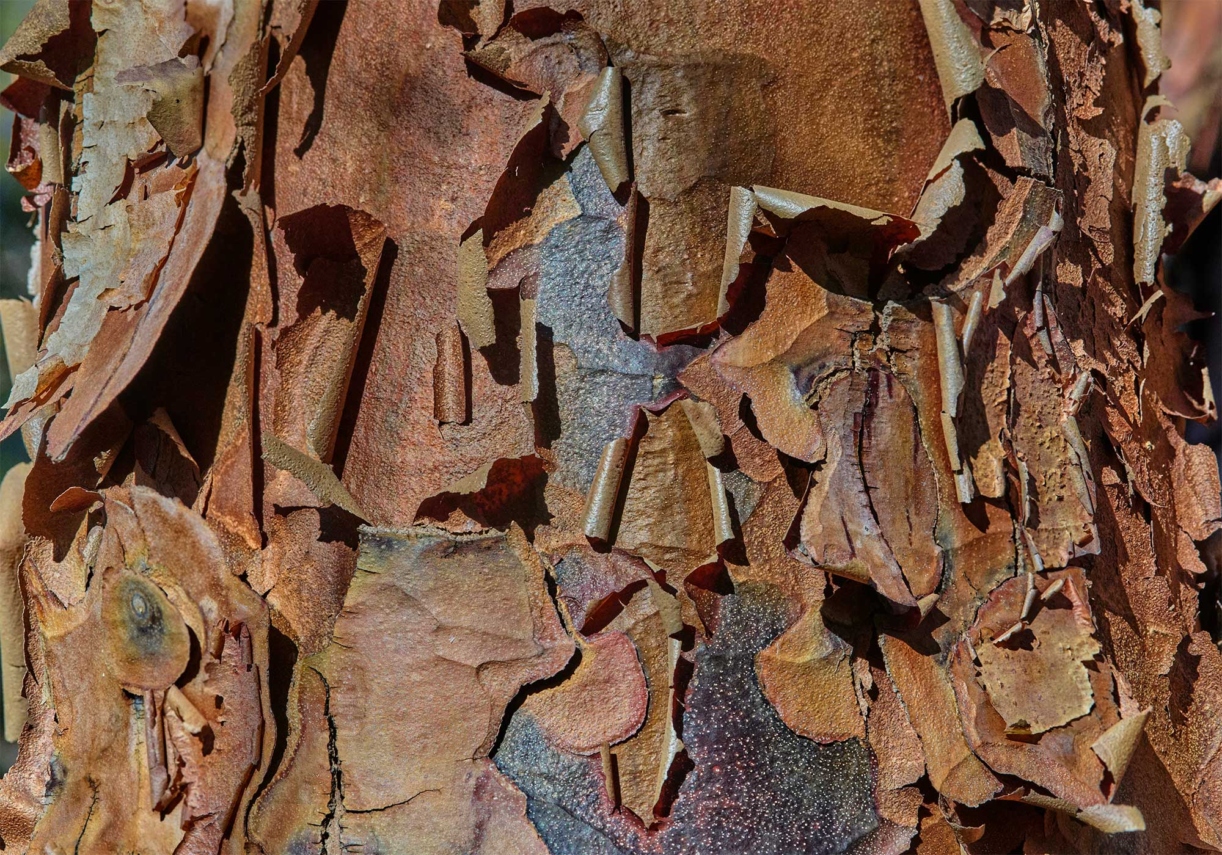
Shiny, cinnamon-colored bark that curls away like Orphan Annie’s hair make this small tree a favorite of many Arboretum visitors. It is an endangered species in its native wild habitat in China, so the Arboretum has planted a young grove of these trees in its Temperate Asia Collection (near parking lot P-5) to help conserve their genetic diversity. A handsome mature specimen with show-off bark can be found along the Meadow Lake Trail (parking lot P-1).
Weeping European Beech
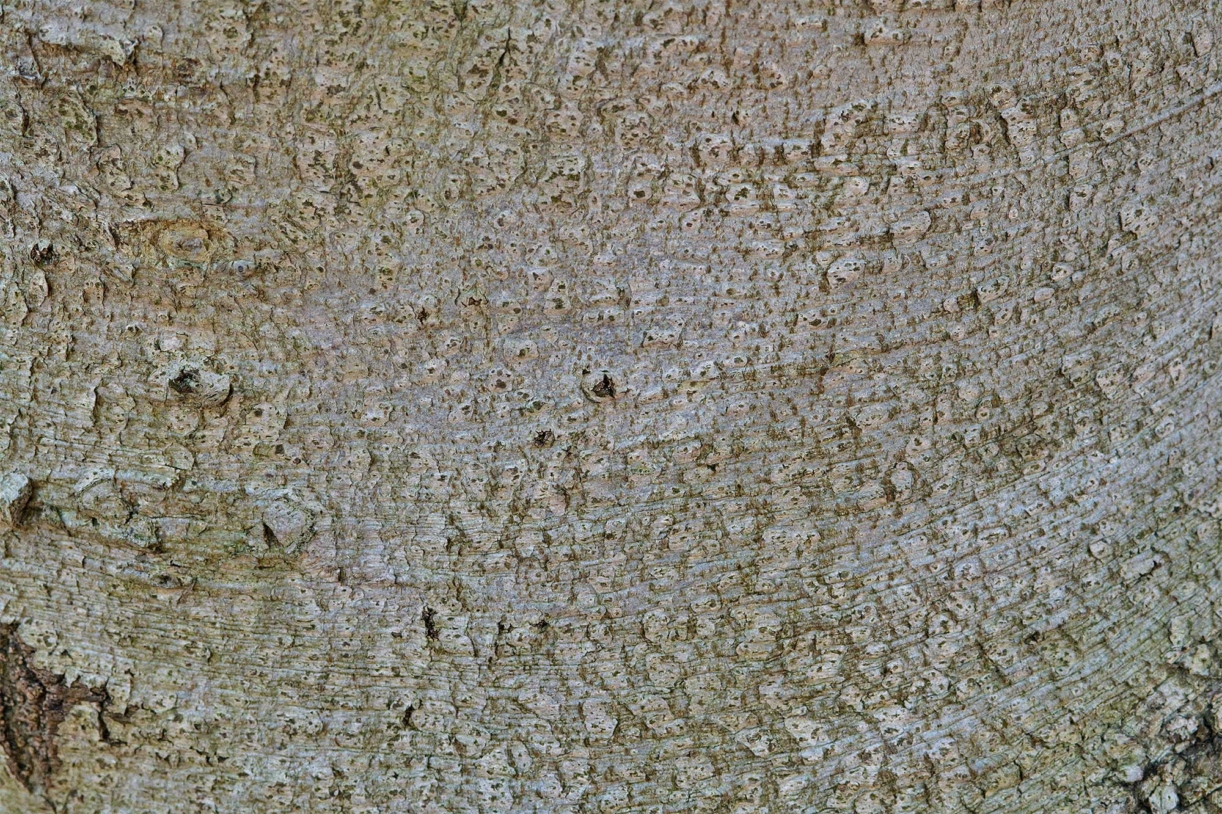
The smooth, elegant gray bark of beech trees in locations other than the Arboretum is often seen with initials carved in it. (The urge to write on beeches seems to be ancient: The old English word boc meant both “beech” and “book.”) The Arboretum has tirelessly protected the unblemished bark of a 70-year-old weeping European beech (Fagus sylvatica ‘Pendula’) in the Ground Cover Garden (parking lot P-1). Please help keep this tree’s bark free of carvings.
